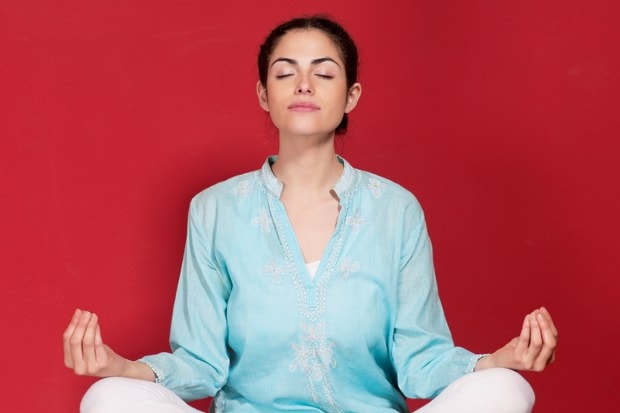There are three interior body locks, or Bandhas (also spelled Bhanda), that are used in yoga. These locks function much like windows in that they can be opened or closed. Keeping the locks closed is a way of retaining Prana. In other words to sustain life energy and boosting the body's ability to heal while increasing physical endurance and sharpening the senses. Specific exercises are done for each of the locks, with the emphasis on Pranayama (breath extension).
All three interior body locks can be activated at the same time as well. This practice is called Maha Bandha or the Great Lock.
Working With The Three Interior Body Locks
1) Mula Bandha
This lock is also known as the Root Lock. It is the first of the locks used in this practice. The location focused on during Rook Lock is the same as with the Root Chakra, in the space between the anus and the genitals, known as the perineum. Here is how you can activate this Bandha:
- Assume a kneeling position on the floor (a mat is not necessary), and then gently sit back on your legs. Keep your knees about hip width apart. Hold a breath, either in or out, during the next three steps. You should do these quickly and smoothly, which may take a bit of practice.
- Contract the Root Lock area, while breathing normally.
- Then draw up the genitals until the urethral tract is contracted.
- Last, draw the lower abdomen toward the spine.
This exercise unites the two major energy flows, Prana and Apana, increases psychic heat, and balances the spirits of Yin and Yang within your body. Use this interior body lock alone or in conjunction with the next two locks. Root Lock can be performed during asanas to give the postures extra lift.
2) Uddiyana Bandha
The second interior body lock is also called Diaphragm Lock. The area of focus with this lock is the actual diaphragm location. Here is how this Bandha works:
- Assume a sitting position on the floor, in Lotus or Easy Pose.
- Inhale, then exhale, followed by a false inhale, which is done by drawing the abdomen in and up without taking in any breath. Your breath itself should be held out.
- Activate this Bandha then by lifting the diaphragm high up into the thorax while pulling the upper abdominal muscles back toward the spine, creating a cavity, and giving a gentle massage to the heart.
This moves and transforms Prana up to the neck region, and stimulates the hypothalamic-pituitary-adrenal axis in the brain. A renewed sense of compassion and inner harmony results from this action, and it can also give you a renewed feeling of youthfulness. Uddiyana Bandha flows smoothly from Mula Bandha, and can also be used by itself.
3) Jhalandara Bandha
This interior body lock is also called Throat Lock and is the last of the three body locks. The area of focus will be on the throat region. This lock is used during all chanting meditations and pranayams. This is how you do it:
- Begin by sitting comfortably in Lotus or Easy Pose. Inhale so that the lungs are about two thirds full. Hold that breath.
- Next drop the chin down toward the chest, without tilting the head forward or rounding the back of the neck.
- Lift the chest and sternum upward, while stretching the back of the neck by pulling the chin back toward the neck itself. Your chin should be resting in the notch between the collarbones, and you should feel some tension the back and sides of the neck, but not to the point of pain. Hold for as long as you are comfortable, and then release your breath.
Engaging Jhalandara straightens the cervical vertebrae, and allows open flow of Prana to the brain. It also puts pressure on the thyroid and parathyroid glands to enable their secretions, and also activates the pituitary. This lock is important to be performed during all Pranayam (breathing) exercises as it prevents pressure from building up in the eyes and ears, and the possible dizziness that can result from that pressure.
Maha Bandha – The Great Lock
This Bandha is also known as the Great Lock. It is the application of all three of the interior body locks at once. The Great Lock provides the highest level of benefits.
- Begin by sitting on the floor, on your heels, with your knees about hip-width apart, palms resting on your thighs. Apply Root Lock and relax it.
- Next apply Diaphragm Lock and relax it.
- Last, apply Throat Lock and relax it.
Repeat this action in a rhythmic alteration for 2 to 10 minutes, pulling in the locks on the inhale (your breath will naturally go out on the first two locks).
Note that you should always perform these exercises on an empty stomach, as it will enable you to distinguish the locks form each other and be aware of the energy as it flows along your spine.


